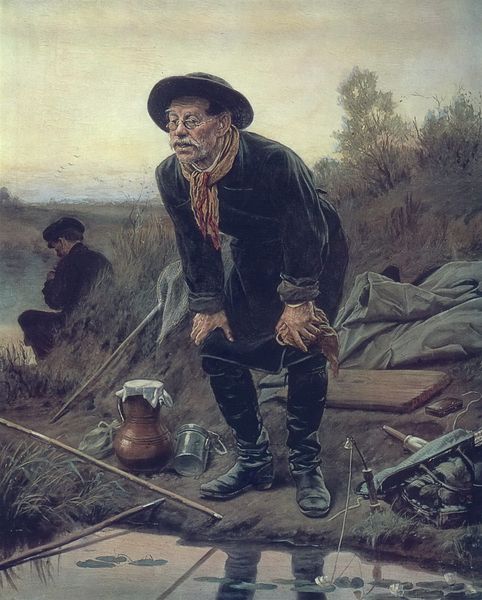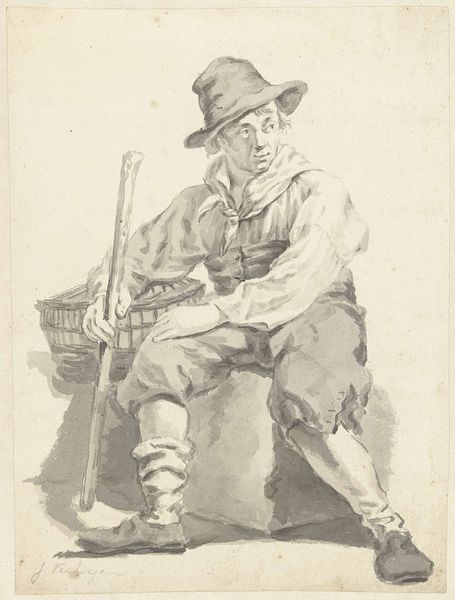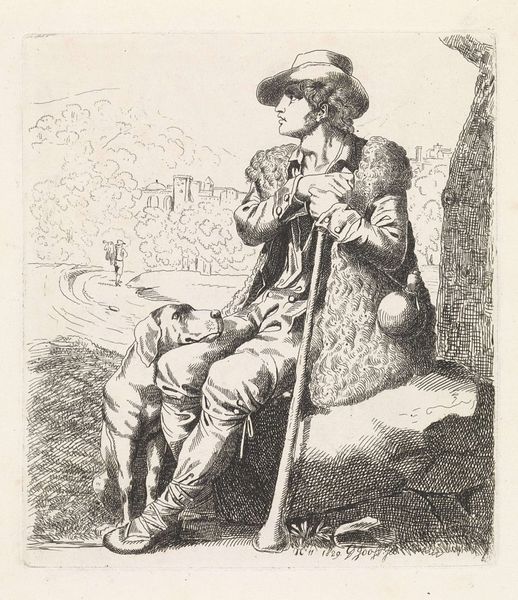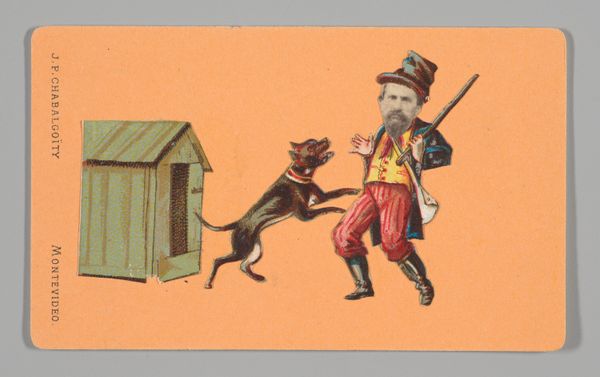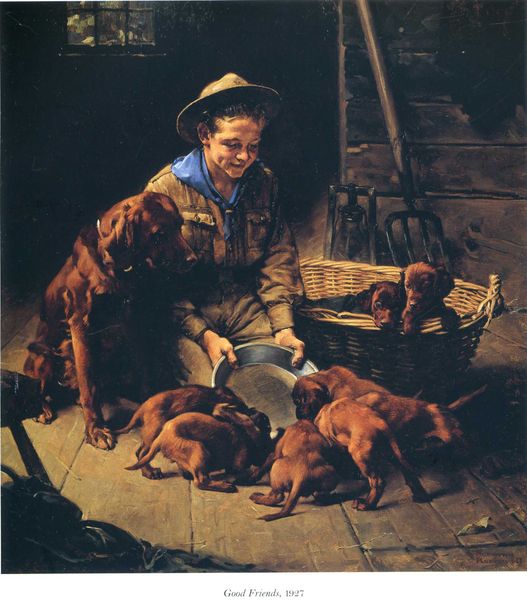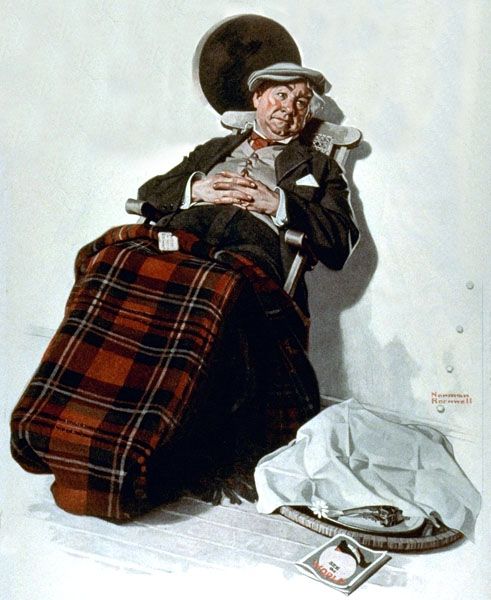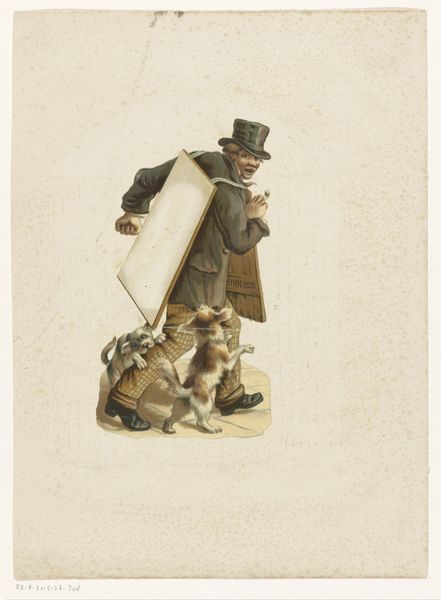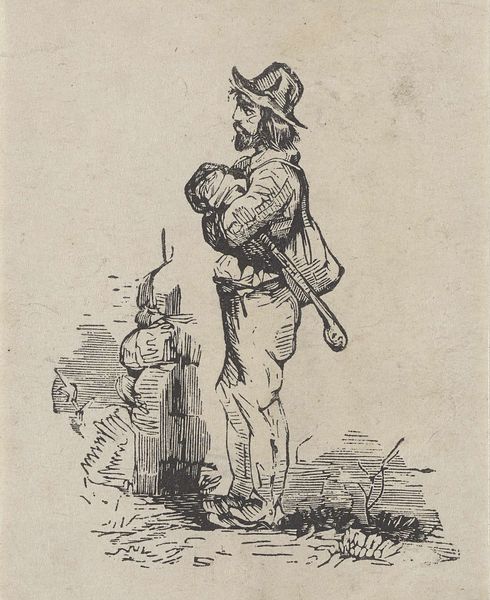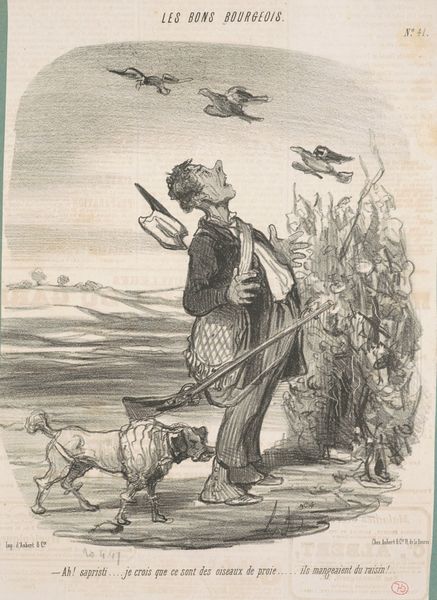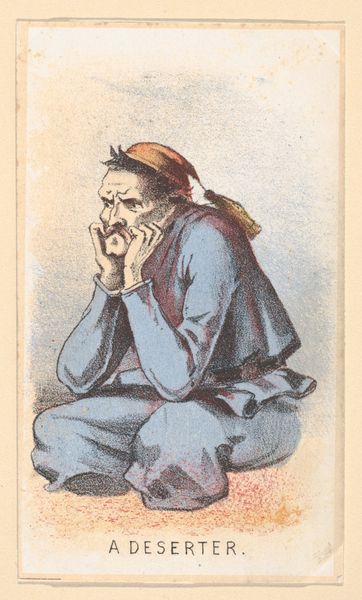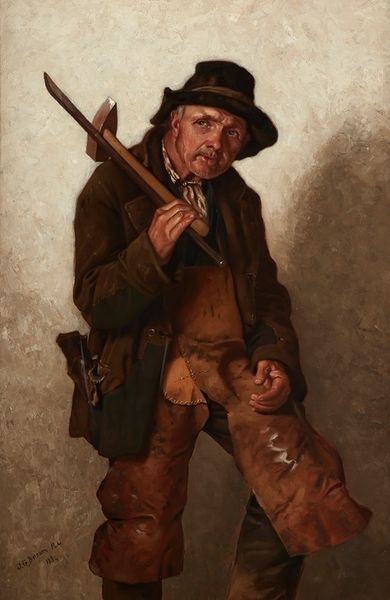
oil-paint
#
portrait
#
animal
#
oil-paint
#
dog
#
figuration
#
oil painting
#
male-portraits
#
genre-painting
#
realism
Copyright: Norman Rockwell,Fair Use
Editor: This is "Hobo and Dog" by Norman Rockwell, painted in 1924. It's an oil painting, and there's a tenderness in the depiction of this man sharing his meager meal with his dog. It's quite touching, but also a bit romanticized, wouldn’t you say? How do we understand Rockwell’s image in relation to the historical context of poverty it depicts? Curator: You've touched on a critical point. Rockwell often presents an idealized view of American life, which certainly has socio-political implications, particularly in the depiction of class. While ostensibly showing a scene of simple sharing, it is crucial to remember this image was created following World War I and reflects the lingering societal anxieties around class divisions and labor shortages. Editor: So, it's not just a charming scene, but potentially a comment on something deeper? The "Yankee" newspaper tucked beside him – does that tie into this in some way? Curator: Precisely. That newspaper and the date signify a period of increased nationalistic sentiment alongside economic hardship for many Americans. Rockwell positions the "hobo" not as a societal problem but as an individual worthy of empathy. Consider, though, how this image circulates and whom it serves. Does it encourage meaningful dialogue about the systemic issues causing poverty, or does it reassure a more affluent audience? Editor: That makes me see this in a whole new light. It's a beautiful image, but I appreciate the deeper socio-political considerations we need to make. Thanks! Curator: Exactly. By interrogating the artwork's historical and cultural context, we reveal its relationship to American society and, potentially, how those visual constructions of poverty might remain today.
Comments
No comments
Be the first to comment and join the conversation on the ultimate creative platform.
